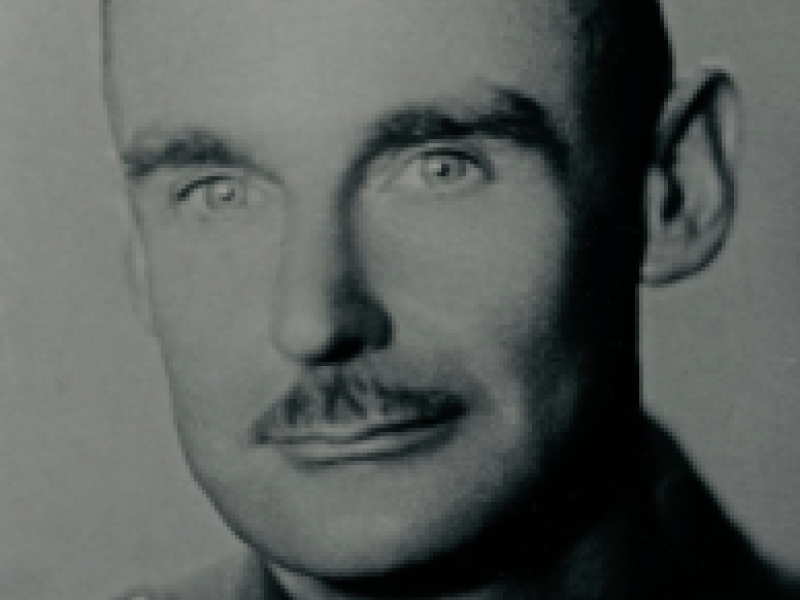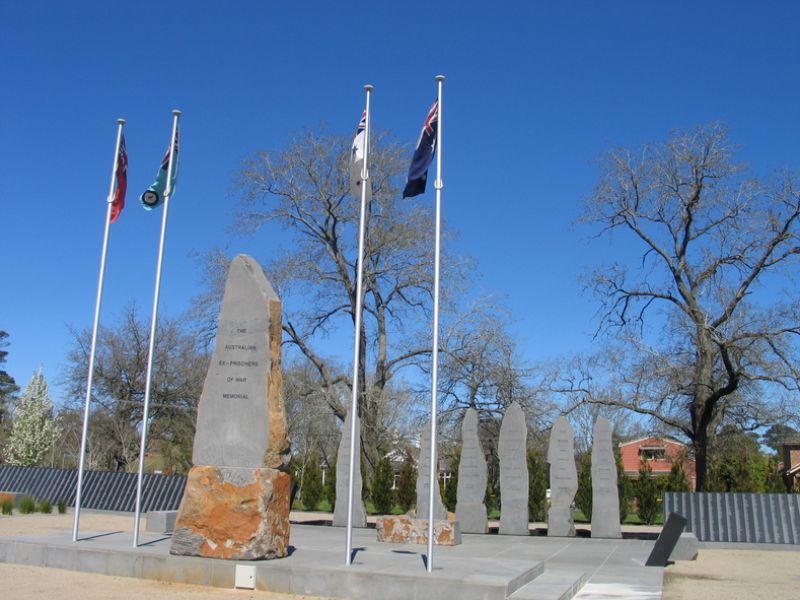Thomas Alwyn Shannon
Alwyn was born on the 8th of June, 1900 at Fitzroy in Victoria. He would be one of six children for Thomas and Lilian Emily (née Dodd) Shannon. The 1921 to 1942 Australian Electoral Rolls have him being listed as a farmer and living at “Glenhope” at Berringama.
Alwyn enlisted at Caulfield, Victoria on the 11th of July, 1940. He was allocated the Army Number VX42260. One week later he was transferred to the 15th Training Battalion stationed at Shepparton, Victoria. After two months initial training he was transferred to the 2/2nd Pioneer Training Battalion at Hamilton in Victoria’s western districts. His next posting in Australia was to Puckapunyal, the main training establishment in Victoria at the time. In late February of 1941 the battalion moved by rail to Balcombe in the Mornington Peninsula. The training syllabus at Balcombe consisted of physical exercise, use of demolitions, construction of emplacements and the use of wire to fortify a position. It also included many kilometres of route marches, often with full kit.
On the 4th of April 1941, the 2/2nd Pioneer Battalion sailed from Sydney, for the Middle East, aboard the Queen Mary (referred to as HT N.N in official communications). On this journey the Queen Mary would sail in convoy with Queen Elizabeth and Mauretania (II). The battalion arrived in Port Tewfik, the port of Suez, in May, travelled by train to Palestine and camped at Hill 95. It began preparing for its first action supporting the 7th Division in Syria against Vichy French forces.
It was during the battalion’s first actions that Alwyn was awarded the Military Medal. His citation for his award stated;
“VX42260 Cpl. Thomas Alwyn Shannon, Pioneers. Displaying great courage, determination and physical endurance, Cpl. Shannon, while acting as Sec. Cmdr in 11 Pl of “D” Coy. during the attack through the banana plantations of Damour on the early morning of Wednesday, 9 Jul. 41, led his section with great gallantry against the strongly defended enemy posts. When held up by cross fire from enemy M.G.s. He successfully withdrew his section. He then, although twice wounded, led his section forward tenaciously, eventually overcoming the enemy opposition.”
Alwyn was admitted to the 7th Australian General Hospital where he remained for six weeks while his wounds healed. The 2/2nd Pioneer Battalion would remain in the Middle East until early February of 1942.
On the 3rd of February the battalion was split into five different transports at Suez. These were SS Orcades, SS Silver Willow, SS Shillong, SS Sophocles and SS Methura. By the 8th of February all ships were at sea. On the 15th of February British forces in Singapore surrendered. On the 17th the Orcades (with the majority of the 2/2nd onboard) reached Oosthaven in Sumatra before going to Batavia in Java. The troops, as well as a battery of American artillery and a squadron from the 3rd King’s Own Hussars, were combined and told to defend Java. This was more of a political decision to show the Dutch Government in exile in Britain that Commonwealth forces were supporting the Dutch troops. The unit became known as Blackforce as they were under the command of Lieutenant Colonel A.B. Blackburn V.C.. The Japanese landed on Java on the 28th of February. The battalion went into action on the 4th of March where it fought for two days. On the 8th of March the Dutch surrendered and the battalion was ordered to lay down their arms. Alwyn, along with 865 men from the battalion became prisoners of war of the Japanese.
Alwyn’s movements are not known for the next two years. It is known that he was part of a draft of over 700 prisoners formed at Adek Camp in Batavia (current day Jakarta) which started to assemble there on the 9th of May 1944. They embarked on the morning of the 19th of May in the Kiska Maru. The ship sailed for Singapore via Banka Strait and arrived in Keppel Harbour at 1600 hours on the 22nd of May. The prisoners disembarked and travelled in lorries to Havelock Road camp. A strange sight that met them in the harbour was a German U-boat under repair.
11 days later at 0800 hours, the men marched from the camp to the docks and were taken out in landing barges to a ship lying on the roads. Along with the prisoners, the ship contained a load of bauxite. The ship sailed the following day in a convoy that consisted of 11 ships, 3 of which were carrying prisoners of war, escorted by four small corvettes. As the convoy sailed there was an uneasy feeling about the presence of Allied submarines in the area. This was heightened when the leading corvette was torpedoed on the night of the 6th/7th of June.
Although kapok lifebelts were provided, the Japanese sergeant of the guard would not allow them to be issued to prisoners. Fortunately, some swift talking from Major Morris resulted in the lifebelts being handed out. On the 11th of June the convoy reached Manilla Bay. It anchored off the town and remained there for two days, sailing on the morning of the 14th. The convoy now consisted of 10 ships, 3 corvettes, a minelayer and a whaling ship heading for Formosa. During the passage a severe storm damaged the Kiska Maru. This resulted in her immediately discharging her cargo upon reaching Takao on the 18th of June.
The following morning the draft was transferred to a larger cargo ship, the Tamahoko Maru. Along with the draft there was a quarter cargo of rice and sugar and 500 Japanese servicemen, all of whom bore the appearance of survivors. Once again lifebelts were provided but not issued, the guards insisting that they were to be stacked against the ship's side.
The convoy, which now had one less corvette attached to it, sailed from Formosa on the 20th of June and encountered pleasantly cool weather, which helped the POWs in their cramped position between decks. At 1150 hours on the 24th of June, in an approximate position 40 miles south-west of Nagasaki, all on the Tamahoko Maru were awakened by an explosion on another ship in the convoy. Within seconds it too was struck by a torpedo just forward of the bridge on the starboard side, blowing the covers off the hatches. It was commented by survivors that this explosion must have killed many men sleeping on them and numbers of others were known to have been struck by falling debris. In amongst the confusion many men, both POWs, crew and Japanese servicemen, were trying to make their way up top to reach the lifejackets or a lifeboat. The ship sank in less than two minutes.
Initially rescue boats only picked up Japanese personnel, leaving the POWs in the water. At 0700, seven hours after the ship had sunk, the small whaling ship returned and lowered rope ladders. Of the 700 plus POWs that had boarded the ship, only 211 survived the sinking. It is unknown whether Alwyn was killed in the initial blast or drowned after the ship was sunk. Like so many others, his body was never found.
Alwyn is remembered on the Australian War Memorial Roll of Honour, the Ballarat Australian Ex-Prisoners of War Memorial, the Singapore Kranji War Cemetery, and the Corryong War Memorial. For his service, he was awarded the Military Medal, the 1939-1945 Star, the Africa Star, the Pacific Star, the Defence Medal, the War Medal 1939-1945 and the Australian Service Medal 1939-1945.

 Stephen Learmonth
Stephen Learmonth
